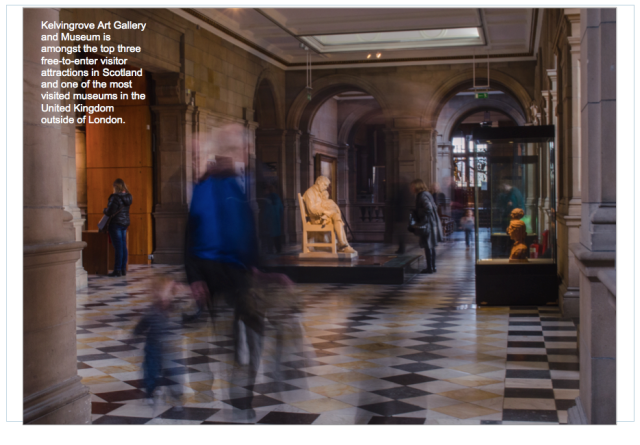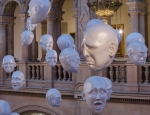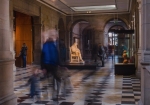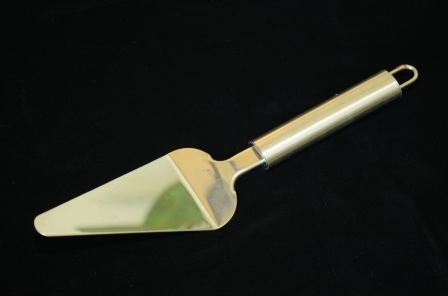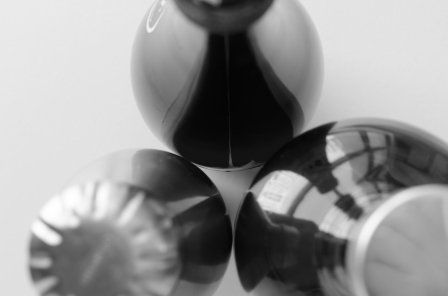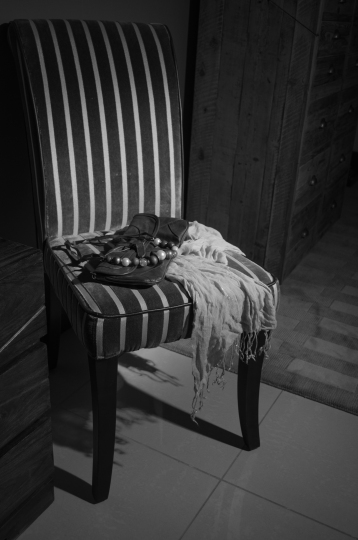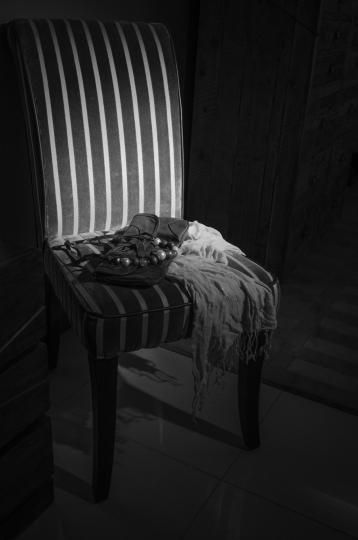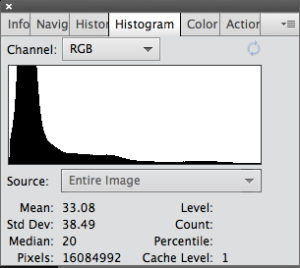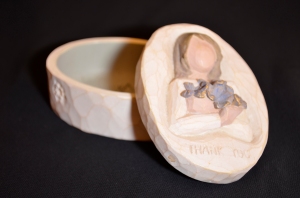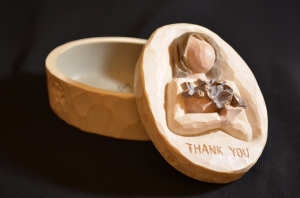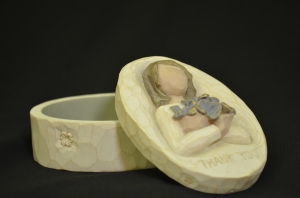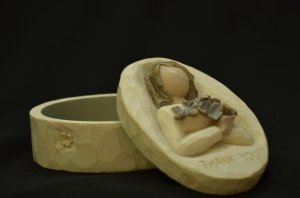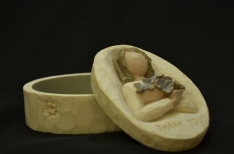Contrast and shadow fill
Introduction
Präkel (2009) describes contrast as the difference in brightness between the darkest and lightest parts of an image. The course notes advise that in daylight, particularly on a large-scale, there is little a photographer can do to change the contrast of the scene, except perhaps wait for the light to change. However, when photographing indoors the contrast can be controlled in a number of ways.
This exercise looks at how reflectors, objects that reflect much of the light that falls on them, can be used to shape light by filling the shadows of a scene with light to varying degrees.
Präkel (2007, p116) notes that almost any large surface can be used to reflect light. Home made examples; a large white card (around 2ft-3ft) and some aluminum cooking foil are suggested by the course notes.
Set up
Instructions for set up were as follows-
- Set up a simple still-life shot that will leave room for access at the sides of the scene.
- Set the camera on a tripod to shoot from the same level as the still-life.
- Fix a light about 2-3 feet to one side of the still-life and at its level, so that it is at right angles to the camera’s view
- Have the card, aluminum foil and a diffuser to hand.
I decided upon a simple vegetable still-life against a plain black background. I put a speed light on a stand and positioned this to the right of the still-life. After a few test shots I decided upon 1/32 flash power. The camera was positioned in front, facing the still-life. As I was shooting under low light (except for the flash) I opted to use a wide aperture.
I gathered the card, foil and the speed light’s diffusion dome and placed these close by. To this assortment I also added a, recently purchased but not yet used, 5 in 1 reflector set.
Exercise
I carried out the exercise instructions (and adding a few steps to incorporate the 5 in 1 reflector) took the following photographs.
1. Without a diffuser on the speed light.
Without a diffuser the light is small and high contrast. This has caused bright highlights on both tomatoes and on the top of the pepper. There is a hard shadow of the pepper on the background cloth and of the pepper and the green beans on the left of the frame where no light has entered the shadow (Hunter et al, 2012, p19). The colour of the tomatoes appears washed out by the white light.

1. Without diffusor,
68mm, f/4.5, 2s, ISO 250
2. With a diffuser on the speed light.
The highlight spots on the vegetables are smaller than previously. The diffuser has made the light larger and scattered it. Some of the light has entered the shadow areas making the shadows softer. (Hunter et al, 2012, p21)

2. With diffuser,
68mm, f/4.5, 2s, ISO 250
3. With diffuser. White card positioned 3 feet from arrangement, opposite from the lamp.
The white card has reflect some of the light back onto the scene and as a result it has filled the shadow cast by the beans and pepper on the left hand side of the frame.

3. White card positioned 3 ft from arrangement, opposite lamp.
68mm, f/4.5, 2s, ISO 250
4. With diffuser. White card positioned 1.5 feet from arrangement, opposite from the lamp.
I had difficulty focusing in this image due to low light, therefore I adjusted the composition and exposure slightly. This has made it difficult to directly compare the contrast in this image with the previous one. Although there does look to be slightly more highlighted areas on the fruit.
According to Präkel (2007, p116) reflected light behaves in the same way as a main light source which means it follows the inverse square law. The inverse square law states that the intensity of light observed from a constant source falls off as the square of the distance from the source. (p13). Put simply, by moving the reflector half as close as previous you double its effect, meaning twice as much reflected light.
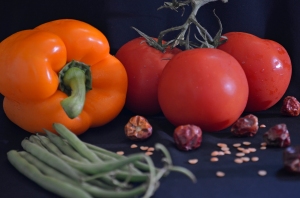
4. White card positioned positioned 1.5 feet from arrangement, opposite from the lamp.
55mm, f/5.6, 1s, ISO 320
5. With diffuser. White reflector positioned 1.5 feet from arrangement, opposite from the lamp.
There seems to be no real difference in contrast between the white card and white reflector, except perhaps, the white reflector has reflected more light onto the background cloth.

White reflector, positioned 1.5 feet from arrangement, opposite from the lamp.
55mm, F/5.6, 1s, ISO 320
6. With diffuser. Gold reflector positioned 1.5 feet from arrangement, opposite from the lamp.

6. Golf reflector,
55mm, f/5.6, 1s, ISO 320
Gold reflectors work like other reflectors by directing light back onto the subjects, however, gold reflectors ‘warm up’ the reflected light Präkel (2007, p116). The contrast in the image using the gold reflector is similar to the that of the white reflector although on close inspection the contrast is slightly less around the dark areas of the pepper stem and the green beans. The pepper is also very slightly more yellow with the gold reflector.
7. With diffuser. Silver reflector positioned 1.5 ft from arrangement, opposite from the lamp.
The silver reflector seems to have reflected a lot more light onto the scene than the white reflector. The left side of the pepper is lighter and markings can be seen while a new small highlight spot can now be seen reflected in the peppers skin on the far left of the frame.
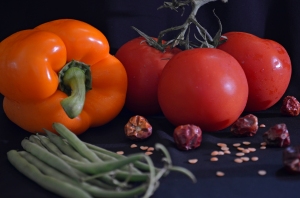
7. Silver reflector,
55mm, f/5.6, 1s, ISO 320
8. Card covered with aluminum foil, dull side facing outwards, and take photograph.
The dull sided foil has reflected a lot of light back into the shadows. In particular those on the cloth covering the tabletop and under the pepper on the right side.

Card covered in foil, dull side facing out.
55mm, f/5.6, 1s, ISO 320
9. Card covered with aluminum foil, shiny side facing outwards, and take photograph.
Unfortunately the focus on the shot was off and I failed to notice this at the time of shooting. I have still included it though as you can see that the shiny side of the foil has filled the shadows underneath the peppers and tomatoes and also in the shadows cast by the dries chillies.

Foil shiny side facing out,
55mm, f/5. 1s, ISO 320
10. Card covered with crushed, then smoothed, aluminum foil with the shiny side facing out. Take photograph.
Rather surprisingly, the crumpled but smoothed foil seemed to reflect the same, if not more, light than the smooth foil. Possibly because the light is being scattered at many different angles?

Crushed then smoothed foil shiny side facing out,
55mm, f/5.6, 1s, ISO 320
Arranged in order, from highest contrast to lowest.
I am now asked to compare the photographs and arrange then in order of contrast from highest to lowest.

Highest contrast,
without diffuser and no reflector.

With diffuser

White card at 3ft
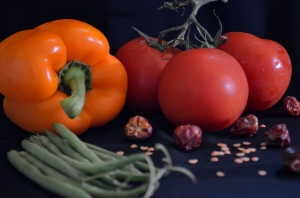
White card at 1.5ft

White reflector.

Golf reflector

Silver reflector

Card covered in foil, dull side facing out.

Lowest contrast, Crushed then smoothed foil, shiny side facing out.

Lowest contrast, Foil shiny side facing out.
The naked lamp without a diffuser resulted in the highest contrast image. The contrast was then reduced by the use of a diffuser and then various light reflectors which reflected light back onto the scene filling the shadows. In this instance, the foil seemed to do this best because of it’s directly reflective quality.
Conclusions
This exercise has shown me that there are several tools available to help the photographer control contrast to varying degrees. Interestingly, the foil and white card gave similar results to the commercial kit which is good to know for the occasions where I don’t have it on me.
The big decision, it would seem, is for the photographer to decided how much contrast do they want in their scene and therefore how much shadow fill is necessary.
For this particular exercise, the one with the most shadow fill was not necessarily the best option. I preferred the shots with a medium amount of contrast, perhaps with the white card and white reflector.
Conversely, it is good to know that should I wish to increase contrast further at the time of shooting. I can do this by moving a naked lamp further away from the subject or by substituting a reflector for a black piece of card.
Hunter, F., Biver, S. and Fuqua, P., (2012) Light-Science and Magic. (4th ed.) Waltham: Focal Press
Präkel (2009) Exposure. Lausanne: AVA
Präkel, D. (2007) Lighting. Lausanne: AVA











